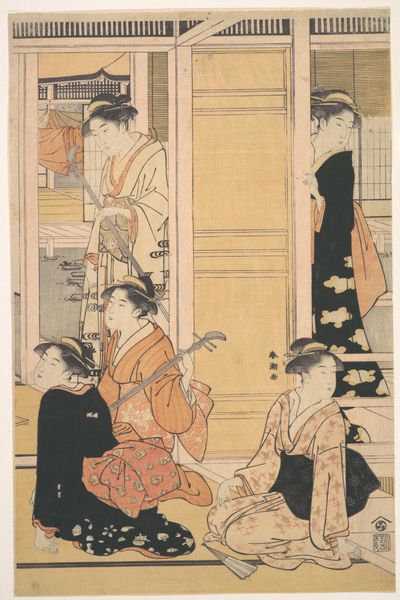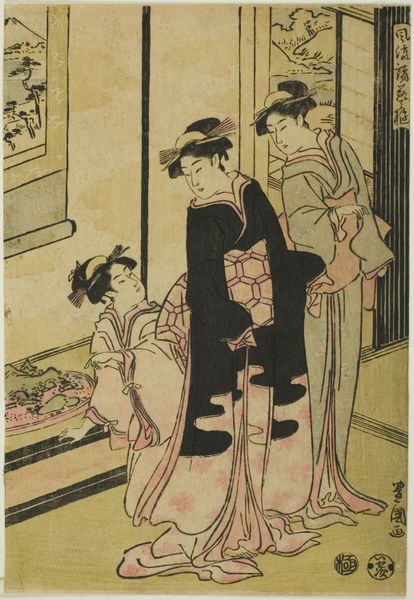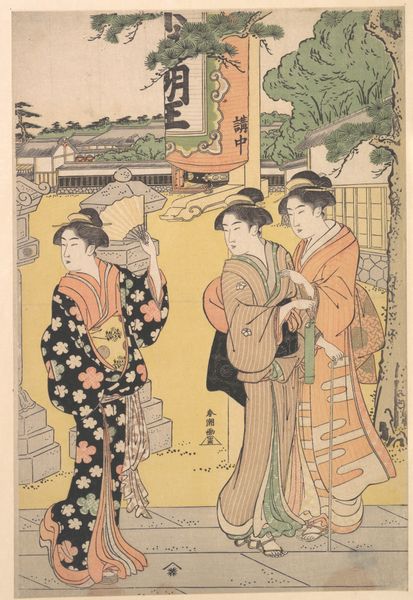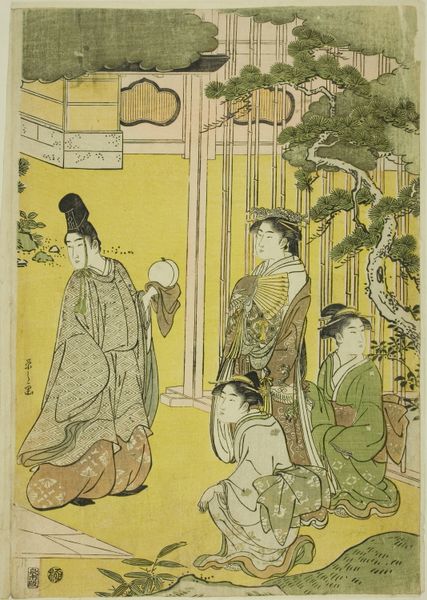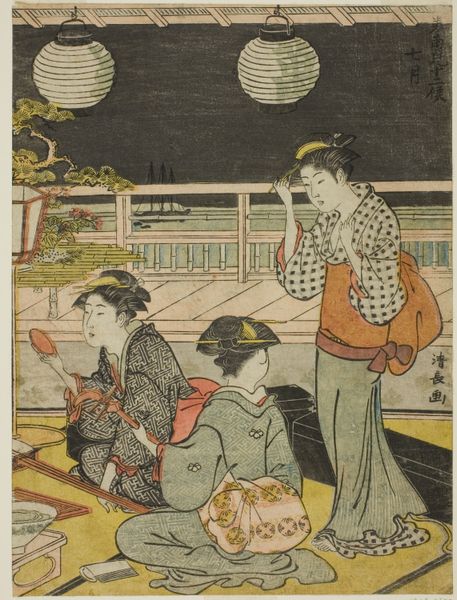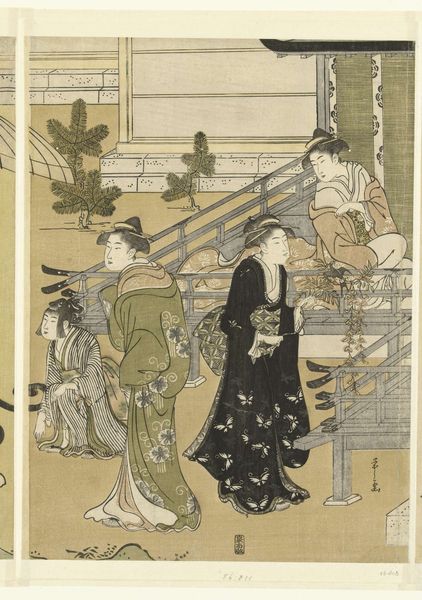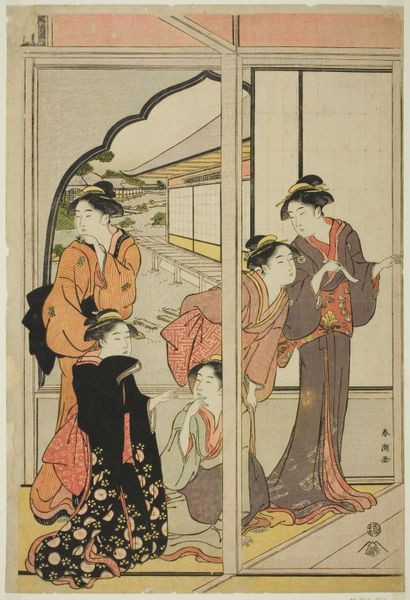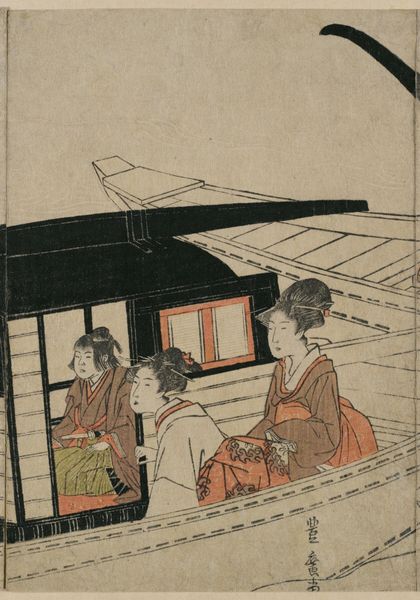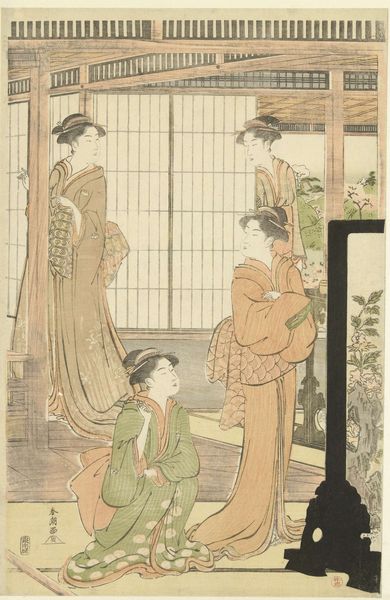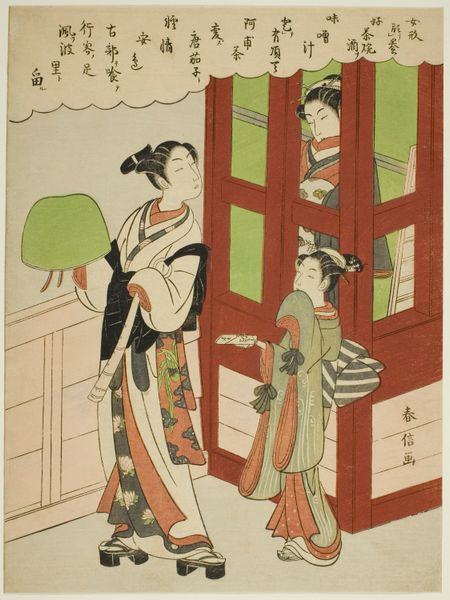
print, woodblock-print
#
portrait
# print
#
asian-art
#
ukiyo-e
#
figuration
#
historical fashion
#
woodblock-print
#
genre-painting
Dimensions: height 347 mm, width 258 mm
Copyright: Rijks Museum: Open Domain
Curator: Good morning. We are looking at “The Visit,” or “Het bezoek” in Dutch, a polychrome woodblock print by Hosoda Eishi, created between 1788 and 1792. It portrays a genre scene in what appears to be an interior setting. Editor: It strikes me as quite intimate and a bit mysterious. The muted colors and the composition, with figures partially obscured by architectural elements, create a sense of intrigue. Curator: It's a fantastic example of Ukiyo-e. Eishi's printmaking was a process involving carving multiple woodblocks, each for a different color. The print would then be carefully created in a particular context that shows both leisure and cultural class. It’s a peek into the commercial production of art during the Edo period. Editor: Yes, but let’s consider its formal qualities first. Notice how the lines, especially in the women's clothing and hair, define the aesthetic, they are rendered with such delicacy. The limited palette enhances the mood; the browns, greens, and creams offer a calming, subdued beauty. Curator: Agreed, but these colors were not arbitrarily chosen. Pigments and dyes available at the time would have heavily influenced Eishi's choices. The patterns on the kimonos would have been selected through markets, and the work displays that production process. Consider the laborious aspect, the artisans involved, and the patronage that would allow it to exist. Editor: Of course, context is key. The use of diagonal lines in the wooden elements creates spatial depth, and contrasts to some extent with the flatness of the figures. The work really draws the eye through those diagonals in order to frame the overall space that they're inhabiting. Curator: Precisely, that use of perspective is part of Eishi’s ability to capture fleeting moments. What’s more, he worked in service to members of the wealthy elite and used various printmakers from workshops throughout Edo—it was no singular activity of artistic expression in some solitary space. Editor: Fair enough. The interplay between geometric and organic shapes throughout the scene also produces some depth and visual engagement that adds intrigue as a snapshot into these social rituals. Curator: Indeed. By analyzing these elements we see how the artwork becomes less a thing of "art" and more an expression of societal making. The intersection of labor and the art production shows more insight into its cultural meaning. Editor: I concur. Examining “The Visit” closely opens the doors of our eyes to the art's inner world and allows a new space to consider the formal elements to its beauty.
Comments
No comments
Be the first to comment and join the conversation on the ultimate creative platform.
